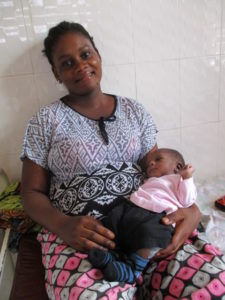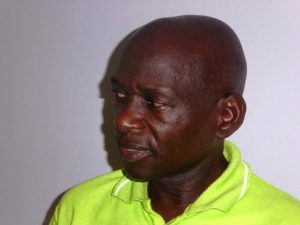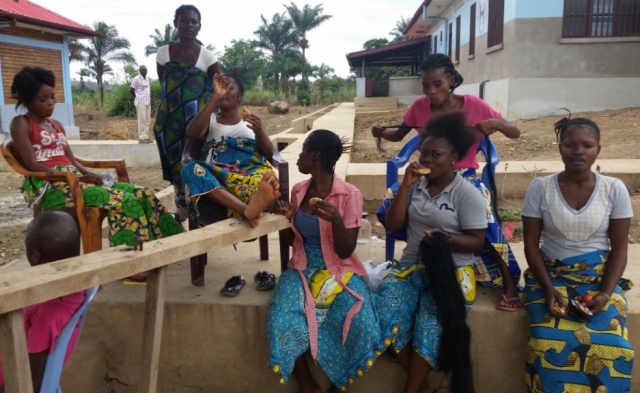Decades of conflict and a lack of government investment have made it hard for people in the DRC to access basic healthcare. The distances, cost of transport, lack of health infrastructure, bad roads, burden of disease, poverty and poor nutrition combine to create a toxic mix that results in one of the highest child and maternal mortality rates in the world.
It is in this context that SD Congo with the support of SDIA and many other donors*, have developed a system called the Community Health Centre model, or CSCOM.
The latest Susila Dharma health centre is the Kwilu Ngongo Mother and Child Hospital. SD Congo’s Chairman Salomon Dianteza Dimpiokia told us more about Kwilu Ngongo and why this Hospital is so important.
In the words of Salomon Dianteza Dimpiokia, SD Congo Chairman:
“Before the building of the Kwilu Ngongo Hospital, the population’s healthcare was taken care of in a very patchy ways by various structures: a private health centre, a state structure suffering from inadequate hygiene and equipment and overcrowding, and by a variety of traditional practitioners, many of whom are charlatans. There is also a well-equipped hospital run by the sugar company that employs many people in the area, but only sugar company employees can use the hospital’s services. The new health centre exists to serve the rest of the population.”
The Democratic Republic of the Congo is divided into Health Zones. Each zone usually has a General Referral Hospital. Kwilu Ngongo has not got an official Referral Hospital, but the sugar company’s hospital played this role.
The Kwilu Ngongo Health Zone has a population of around 140,000 and the area served by the new hospital has a population of 27,000. Although this region has a slightly better standard of living than the area around Nkandu, for example [where another SD Health Centre operates], there was still a need for vital health services.
The first step in the process of creating the Mother and Child Hospital was the setting up of a Health Insurance Scheme by a Civil Society group. However, a Health Insurance Scheme is not much use without an adequate structure where members of the plan could get care. That is where the idea for the new clinic was born. You can read more about the journey from idea to fully built and operating hospital on SDIA’s website!
The hospital has been operating for a year and a month now. The team has taken ownership of the work and is carrying it out. The hospital’s books are balanced and there is a supply chain for medicines.
We have learned lessons from the experience of past CSCOMs and factored in a grant to cover the beginning of implementation. The aim is that when the grant runs out, the centre should have enough income and reserves of medicines to survive. This implementation grant is for 2 years. Otherwise, income comes from patient payment for consultations, laboratory examinations etc., and the state provides some medicine, for example anti-malarials.
The hospital is very busy. In fact, children and women are sometimes taken to a nurses’ storage space to be cared for as there are not enough beds. And there are interventions even during the night because of a lack of space. There is therefore a need to build an extension for these new units. The laboratory is not up to hospital standards. And finally, we need to build a morgue.
This extension is expected to be funded by BMZ, through the hard work of SD Germany. Estimates are being drawn up and the prospects for getting the funding are good.
The other Susila Dharma CSCOMs are:
- Lemba Imbu. Here there is a high level of patient traffic for the surgery and paediatric unit. Blood transfusions are already carried out here and land has been purchased for the building of a surgical ward.
- Nkandu III is a Health Centre, not a hospital. Blood transfusion and other complex operations are transferred elsewhere, but this is challenging for people due to transport problems. The Centre also needs a permanent doctor.
- Kingantoko is also a Health Centre offering only a minimum package of healthcare.
Congolese SDIA member organisation CEDERI Madimba also runs a health centre and plans to add a paediatric service.
Improving water and sewerage is intrinsically linked to improving health is. Kingantoko has a water and sewerage project and, following the success of its clean water project for the village of Kimbobolo, CEDERI Madimba wants to provide drinking water for three neighbouring villages.
Susila Dharma’s work to improve health in the DRC is far from finished!
*Donor organisations that have contributed to the development of the CSCOM model include SDIA, the Buchan International Fund, Blond Trust, SD Canada, SD Britain, SD France, SD Germany, BMZ, SD USA, MSF and the Guerrand Hermes Foundation for Peace, all working together to help meet the Sustainable Development Goals in the Democratic Republic of Congo (DRC).
This article was written by Solen Lees and is reprinted with the kind permission of the Susila Dharma International Association.





Pingback: Help Deliver Health Services in the Congo! | Susila Dharma USA